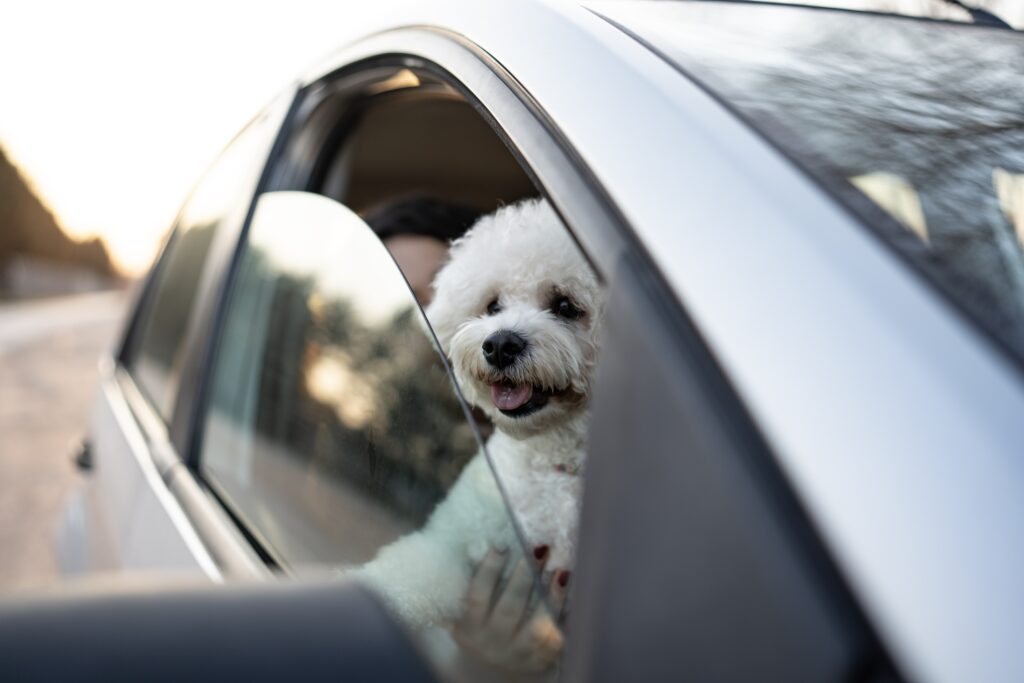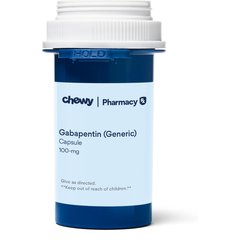How To Prepare for a Hurricane if You Have Pets

Photo by Nikola Milosevic/iStock / Getty Images Plus via Getty Images
You’ve hurricane-proofed your house and stocked up on essentials—but have you prepped for your pets?
Sadly, 47% of evacuees have had to leave at least one pet behind during a hurricane, according to the American Society for the Prevention of Cruelty to Animals (ASPCA). But with a little planning, you can avoid this heartbreaking scenario and keep your pets safe during severe weather.
Key Takeaways
- Begin hurricane preparations for your pets before the storm season starts by gathering supplies and having a plan.
- Include all pets in your evacuation plans, including birds, reptiles, and small pets like hamsters and guinea pigs.
- Confirm that your evacuation destination is pet-friendly before you leave.
- Practice evacuation drills with your pets to reduce stress and identify any logistical issues before an actual emergency.
Prepare Early
You can’t control the weather, but you can control how prepared you are for a major storm. And when it comes to hurricane season (which runs from May to November), the earlier you start, the better.
“The best advice I have is to start preparing before hurricane season begins,” says Kristen Brauer, DVM, a veterinarian at Healing Hands for Pets in St. Petersburg, Florida. “Don’t wait until the hurricane is approaching.”
Establish a Safe Haven
If sheltering in place, designate a safe room—ideally interior and windowless, says Dr. Brauer—where your family and pets can wait out the storm. Make sure there’s space for each pet’s carrier or bed, food, and water.
For evacuation, map out a few pet-friendly destinations, such as hotels, shelters, or friends and family along your route. Call ahead to confirm they’ll accept your pets.
“This is particularly important if you have multiple pets or non-traditional pets, such as feathered or scaled animals,” says Dr. Brauer.
Stock Up on Food and Water
“Pet parents should ensure they have some basics available, because they may not have access to stores or veterinary services for some time after a hurricane,” says Walter F. Burghardt Jr., DVM, PhD, DACVB, a veterinarian at Behavior Clinic for Animals in San Antonio, Texas.
Dr. Burghardt recommends stocking your safe room with at least two weeks of food (this is especially critical if your pet is on a veterinary diet) and fresh water for each pet. Store food and treats in waterproof containers.
If you’re evacuating, bring enough food and water to last until you reach your destination.
Refill Your Pet’s Medication
Don’t wait until a storm is on the radar to refill your pet’s prescriptions. Dr. Burghardt and Dr. Brauer agree that having a 14-day supply of medication on hand is a must throughout hurricane season. This buffer helps you avoid dangerous medication interruptions if pharmacies or your veterinarian run out of stock.
Double-Check Your Pet’s ID
“Should your pet get lost, the best tool for reunion is a microchip,” says Dr. Brauer.
Verify your contact info is up to date, write down your pet’s microchip number, and keep it with your other important documentation. It can also be helpful to add an emergency contact to your account.
But don’t rely on a microchip alone—every pet should wear a collar with an ID tag that displays your current phone number. This will let anyone who finds your pet alert you immediately, without the need for a microchip scanner.
Recommended Products
Gather Important Pet Paperwork
Keep digital and printed copies of your pet’s records in a waterproof file. This documentation will be essential if you need to board your pet, stay at a shelter, or get emergency veterinary care.
This includes:
- Vaccination records
- Medical conditions and treatment instructions
- Recent lab work results
- Microchip information
- Veterinarian contact information
Bring Pets Inside Early
High winds and loud noises can be stressful and frightening for pets (and humans, too). If you have pets who spend time outdoors, Dr. Brauer warns that prep work and storm sounds can cause them to run away or hide, both of which can lead to distressing situations.
But there’s an easy fix: Bring pets into your safe room early.
“Set up their food, bedding, and bathroom area to help them settle,” says Dr. Brauer. She also recommends using a white noise machine to mask potentially scary sounds.
Recommended Product
Check That You Have Pet Transportation Equipment
In case of an evacuation, have carriers, kennels, collars, and leashes or harnesses for each pet packed in your vehicle.
Dr. Burghardt recommends:
- Comfortable carriers with a pheromone-scented mat/towel and favorite toys
- Humane, non-slip restraints (like a head collar or harness) and secure, size-appropriate fixed-length leashes for larger pets
Even carrier-trained pets need a leash or harness for bathroom breaks during travel. For cats, this requires advanced training.
“If the litter pan is not in the carrier/kennel, train your cat to wear a comfortable, non-slip harness and leash,” says Dr. Burghardt. “Do this in advance, with lots of treats.”
Practice Evacuation Drills
Evacuation drills can help you identify potential issues with your route or supplies and reduce stress for everyone involved. Dr. Burghardt recommends using high-value treats during these practice sessions to create positive associations for your pets.
Most importantly? “Know that your vehicle will fit everyone and everything,” says Dr. Brauer. “You don’t want to play vehicle Tetris when you’re trying to leave.”
Manage Pet Anxiety
Pets take their emotional cues from their pet parents during emergencies, so the calmer you stay during inclement weather, the better.
Dr. Brauer offers these tips for managing anxiety in pets:
- Dogs and cats: Use pheromone sprays (such as Adaptil or Feliway), calming treats with L-theanine, or anxiety wraps like ThunderShirts. Provide familiar toys and bedding. For severe anxiety, ask your vet about medications like gabapentin or trazodone before hurricane season starts.
- Birds: Offer hiding tents and favorite treats. Speak quietly and maintain a calm environment.
- Hamsters, guinea pigs, and rabbits: Keep them in their normal cage when possible, or provide hiding spots and familiar bedding in a secure, non-chewable carrier.
- Reptiles: Maintain proper temperature and minimize handling. Pack their familiar hiding spots and bedding material in their travel containers.
Recommended Products
If your pet requires a sedative or anxiety medication, chat with your veterinarian to determine the correct dosage. “It’s important to test the effectiveness of these medications before they’re actually needed,” says Dr. Burghardt.
Pack a Go Bag
Peace of mind comes from knowing you’re ready for anything. Create a dedicated pet emergency kit so you can grab it and go if needed.
This includes:
- Food and water
- Bowls, can openers, and other feeding supplies
- Medications in their original containers
- Veterinary records
- First aid supplies such as gauze, antiseptic wipes, and bandages
- Comfort items (toys, blankets, treats)
- Carriers or crates
- Leashes/harnesses
- Anxiety aids (medication, pheromone products)
- Waste management items (litter, pan, scoop, waste bags)
- Cleaning supplies for accidents
Don’t forget any items for senior or special needs pets.
“If your pet needs slings, ramps, or orthopedic bedding to remain mobile and stay comfortable, have them packed and ready to go,” says Dr. Brauer.
Never Leave Your Pets Behind
“If it’s unsafe for you, it’s unsafe for them,” says Dr. Brauer. And this goes for all pets, from cats to canaries.
“Feathered, scaled, pocket, and other caged pets should be prepared in the same way as dogs and cats,” Dr. Brauer says. “They cannot fend for themselves in a cage if you are displaced for days or weeks.”
If evacuation orders come, leave early with your pets. “Sitting in traffic for hours is stressful to both you and your pets,” says Dr. Brauer. “It’s way better to sit in a hotel room for an extra night than a standstill vehicle for six hours.”
Pets are part of the family. By including them in your hurricane preparation plans, you can make sure they’re safely by your side, no matter what the storm brings.










